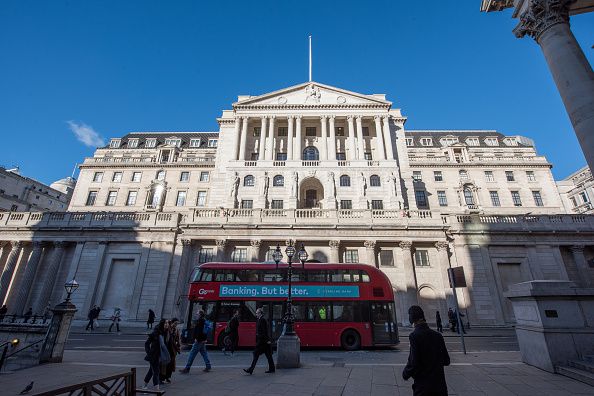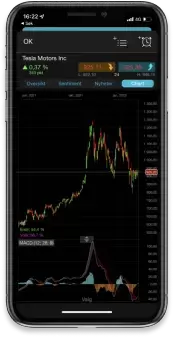The Chinese authorities have confirmed overnight the coronavirus situation has gotten worse.
The death toll has exceeded 170 and the number of confirmed cases is more than 7700. Equity markets in Asia are sharply lower, and the expectation is that European markets will open in the red.
It was an uneventful day on European and US stock markets yesterday as there was an absence of appetite from traders. Volatility was low across the board. The FTSE 100 and the DAX posted minimal gains while Wall Street was mixed. The health crisis continued to get worse but that it didn’t seem to have major impact on sentiment.
In light of the latest Energy Information Administration report, it seems as if oil demand is weak. The update showed that US oil stockpiles jumped by over 3.5 million barrels, and gasoline inventories rose by 1.2 million barrels. The energy market was mixed yesterday, but keep in mind the commodity endured major losses in recent sessions.
The Fed kept interest rates on hold yesterday, meeting forecasts. Jerome Powell, the head of the Fed, said that rates are at the right level to aid the economy, assist the labour market, as well as help push up inflation. The central bank now wants to see inflation hit 2% rather than just get it near 2%. Trade tensions plus slower international growth were blamed for the disappointing levels of manufacturing and investment.
The US dollar’s dominance continues and it turn it has been putting pressure on the GBP/USD as well as EUR/USD. The impression dealers have is the Fed are content to maintain their current policy for the time being, so in turn the greenback is relatively attractive.
The Bank of England will release its interest rate decision at 12pm (UK time). The announcement will be closely watched as there has been a lot of chatter about an interest rate cut. The markets are pricing in a roughly 53% chance of a rate cut, but keep in mind it was around the 70% mark not too long ago. Jonathan Haskel as well as Michael Saunders have voted for cuts in recent months. Gertjan Vlieghe has indicated he would consider voting for a cut too, so this meeting go come down to the wire.
There is an argument for the for the UK central bank to cut rates. The retail sales report for December showed a 0.6% fall, so consumers are clearly nervous about spending money. The manufacturing sector has been sector has been in contraction for the past eight months. On the other hand, the flash reading of the UK manufacturing PMI and services PMI updates both showed improvements on the previous final readings. The unemployment rate is at its lowest rate since the 1970’s, and wages are comfortably above the CPI rate, so workers are getting a decent rise in real wages. The Conservative government will release the Budget in March, and it is likely to be pro-business, so the BoE might keep rates on hold for the time being.
The eurozone unemployment rate will be released at 10am (UK time), and economists are expecting the reading to hold steady at 7.5%
The German CPI rate is expected to increase to increase to 1.7% from 1.5%. The European Central Bank are determined to drive up the inflation rate in the currency bloc, so a jump in German inflation should assist the region. The reading will be posted at 1pm (UK time).
The advance reading of US fourth-quarter GDP will be announced at 1.30pm (UK time). Economists are expecting 2.1%, which would be unchanged from the third-quarter. At the same time the jobless claims reading will be posted and it is expected to edge up to 215,000 from 211,000.
EUR/USD – has been pushing lower since late December and while it holds below the 50-day moving average at 1.1094, the bearish move might continue. Support might be found at the 1.0900 area. A break above 1.1172 should pave the way for 1.1249 to be retested.
GBP/USD – while it holds below the 50-day moving average at 1.3052, the bearish move should continue. Support might be found in the 1.2900 area. 1.3284 might act as resistance.
EUR/GBP – remains in the wider downtrend and if the bearish move continues it might retest 0.8400. A rebound might run into resistance at 0.8600.
USD/JPY – has been pushing lower recently and while it holds below the 50-day moving average at 109.18, the bearish move should continue. 107.65 might act as support. If the wider positive trend resumes, it might retest the 110.00 zone.
Disclaimer: CMC Markets is an execution-only service provider. The material (whether or not it states any opinions) is for general information purposes only, and does not take into account your personal circumstances or objectives. Nothing in this material is (or should be considered to be) financial, investment or other advice on which reliance should be placed. No opinion given in the material constitutes a recommendation by CMC Markets or the author that any particular investment, security, transaction or investment strategy is suitable for any specific person. The material has not been prepared in accordance with legal requirements designed to promote the independence of investment research. Although we are not specifically prevented from dealing before providing this material, we do not seek to take advantage of the material prior to its dissemination.







